Most pet owners see bald patches on their ears and presume it as normal. Others conclude that it is a phase in the lives of cats for them to lose fur. However, the bald patches on cat ears often indicate a potential health risk unless you have a sphinx cat breed.
The majority of cat baldness results from excessive scratching. Therefore, it leads to bald patches or scanty fur. But how do you spot these bald patches on your cat ears?
Table of Contents
- Why is my cat’s ear hair falling out?
- How do bald spots on cats appear?
- What causes cats to have bald patches?
- Treatment for cat hair removal: How to cure hair loss?
- Questions and Answer
- Conclusion
Why is my cat’s ear hair falling out?
A very good guess is ear mites. The reason is that they mostly infect the ears. In most cases, they cause scratching, resulting in hair loss behind the ears. They also make cats uneasy in other parts of their body.
Other external reasons for cat hair loss are.
- Fleas.
- Allergies.
- Restlessness.
- Illness of the Nerves.
- Infections.
- Hormonal imbalance.
- Cancer (Neoplasia).

(Pet cat hair)
How do bald spots on cats appear?
Typical bald spots on a cat start from a single patch to multiple patches on the body, neck, ears, or tail. Sometimes, it is full baldness down to the bare skin. Other times, it is a gradual thinning of the fur.
The loss of hair spreads as your cat continues to suffer the cause of baldness. Whichever is the case, it is easy for Vets to tell the reasons for your cat’s bald patches by mere inspection.
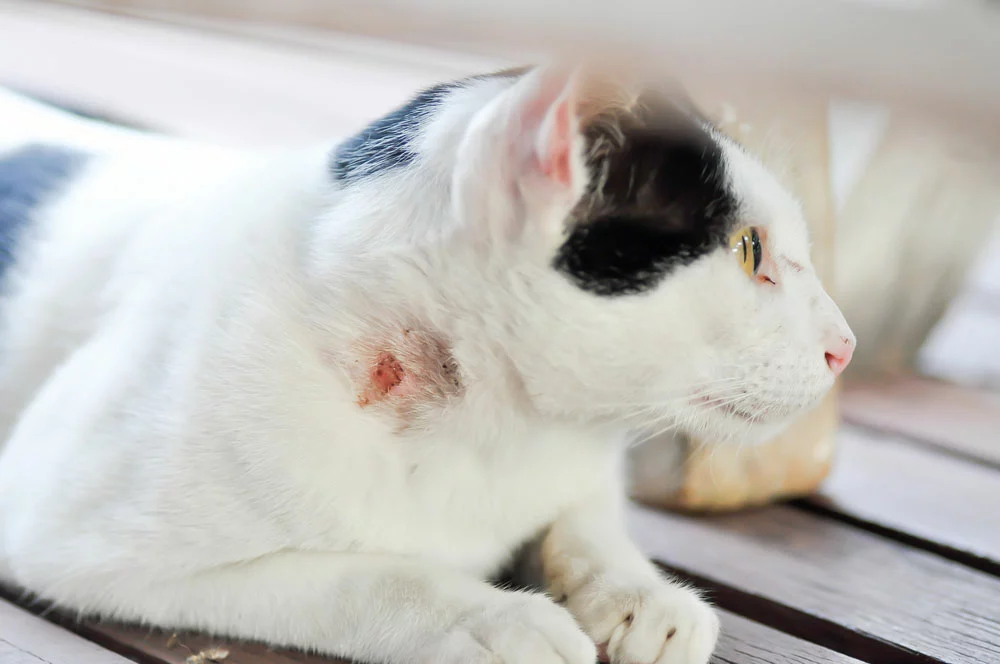
(A cat with a bald patch on its neck).
What causes cats to have bald patches?
There are numerous potential causes of bald patches on cats, including
External parasites (Fleas).
External parasites are, by far, the major cause of bald patches on a cat. Fleas, in particular, are guilty of causing alopecia on your cat’s lower back and tail. As a result of the flea saliva, your cat develops an allergy. Therefore, it results in overgrooming.
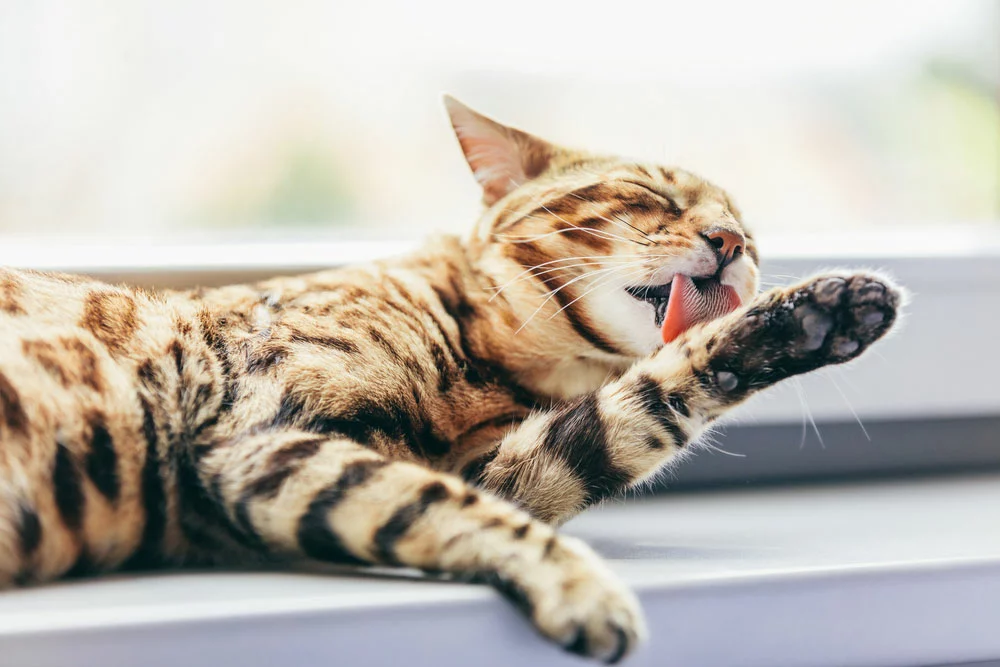
(A cat grooming itself).
Allergies, anxiety, or stress-induced excessive grooming.
Cats are cute and clean by nature. So it is their habit to continuously groom their fur by licking themselves all over. However, an anxious or stressed cat allergic to an environment may lick or scratch excessively. The result is patches of thin fur or baldness.
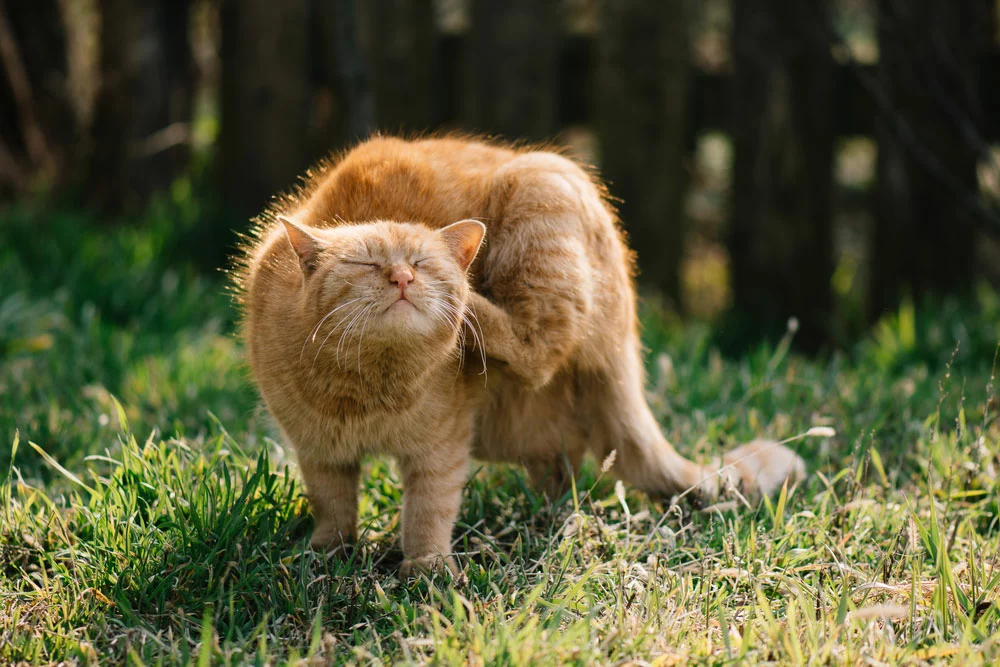
(A cat scratching its ears).
Fungal infections (Ringworm)
Ringworm is a patch of dry crusty flesh caused by a fungal infection. So, your cat’s hair easily falls off if it develops a ringworm infection.
Thyroid problems
Cats often develop thyroid problems. And one of the symptoms of these thyroid problems in cats is a tendency for hair loss and bald patches. Other obvious signs are when your cat’s fur becomes dull, oily, or matted.
Other possible reasons
For bald patches and hair loss in your cat, including the following:
- Cat bite abscess resulting from your cat getting into a fight with another feline.
- Another possible cause is hereditary diseases which often have no cure.
- Leukemia is also a direct and indirect cause of cat alopecia.
- Finally, injuries from cuts and abrasions may cause hair to never grow again.
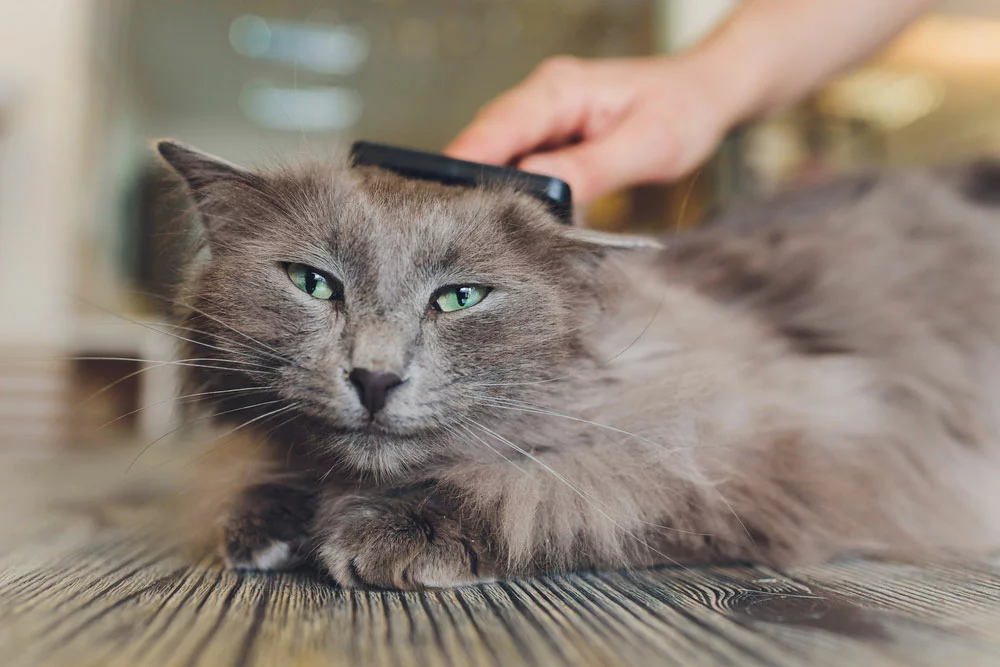
(Cat after scratching)
Treatment for cat hair removal: How to cure hair loss?
Some hair removal solutions suitable for your pet include:
Applying antifungal therapy
This is one of the surest ways to treat hair loss in cats. Your vet will likely recommend antifungal therapy and other medications if they find ringworm or other parasites.

(A cat in its owner’s arms)
Plan your cat’s diet to prevent allergies.
In this case, you need to identify the food or environmental changes that trigger your cat’s allergies. Otherwise, call a veterinary dermatologist for solutions to cat allergy-induced hair loss.

(Cats and cat food)
Eliminating stress
When you observe over-grooming in your cat, it is sometimes a sign of stress. A veterinary behaviorist is, therefore, in the best position to determine the cause of stress. Also, they offer valuable advice on tackling such problems in the future.

(A stressed cat)
Identifying and treating possible ailments
In other cases, your cat may groom themselves excessively because of a bodily ailment. It could be a bladder problem or a pain in the joint. Notwithstanding, consult your vet for the appropriate medicines. When the cat’s level of discomfort drops, hair loss also drops.
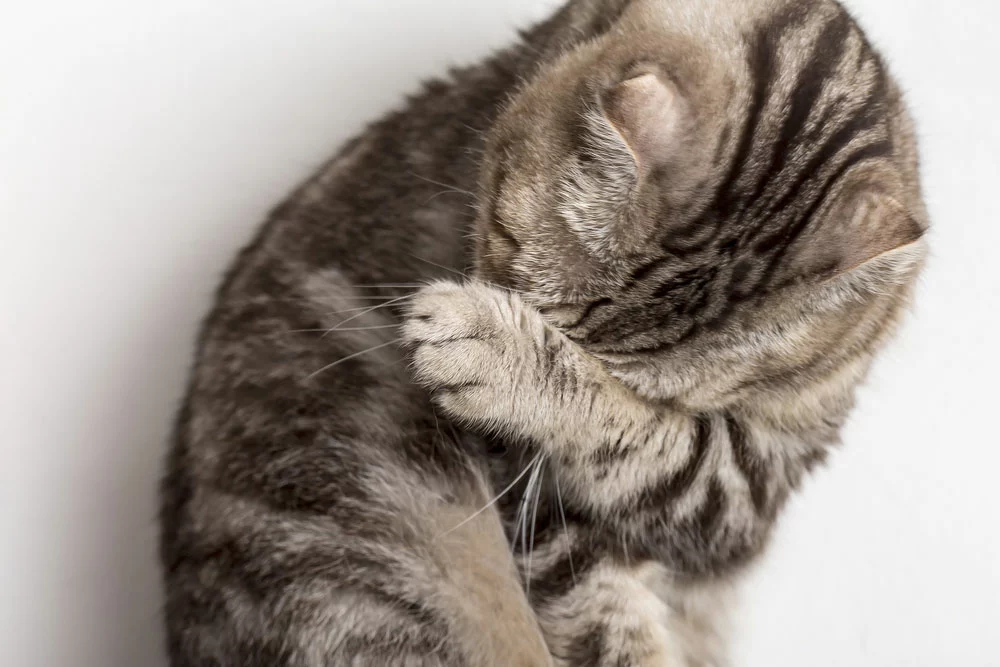
(A cat that feels ill)
Questions and Answer
Q: How can you determine whether your cat has ear mites or if his ears are merely dirty?
Although they are very similar, with lots of scratching, ear mites cause a dusty dark-brown coloring to your cat’s inner ears.
Q: Do cat ear mites disappear on their own?
Some single-use medicines like Revolution are essential for clearing up ear mites. Otherwise, ear mites take several weeks to disappear when not treated.
Q: Will my cat’s hair regrow?
Treating the main cause of your cat’s hair loss, in most cases, allows it to regrow.
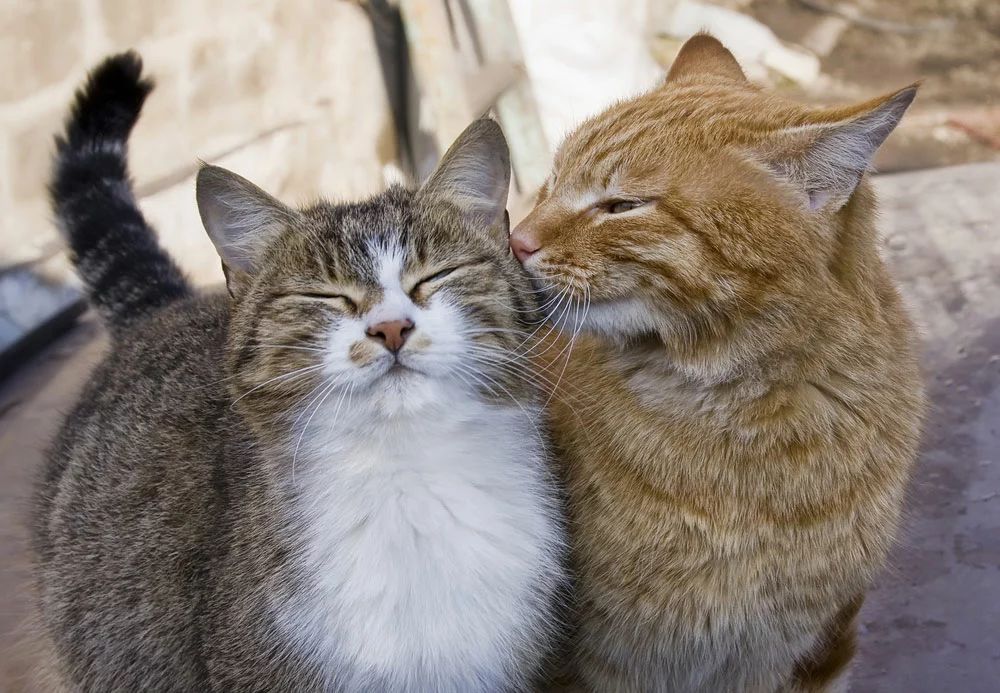
(Two healthy cats with full fur).
Conclusion
In summary, bald patches on cat ears often show poor care and health. It results from several factors, such as parasites, infections, allergies, or over-grooming caused by stress. So, when you notice bald patches or other weird changes in your feline, do not hesitate to contact your vet.
